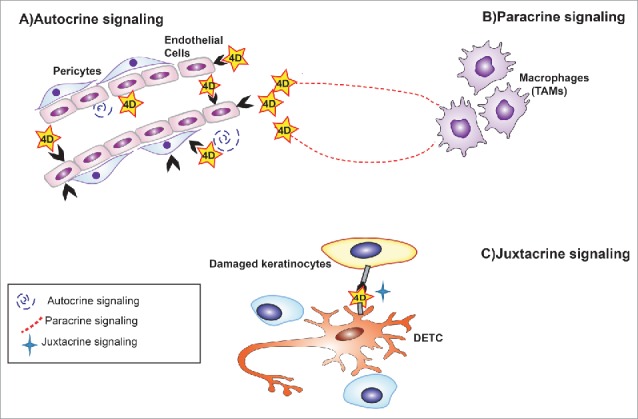Figure 2.

Various signaling mode paradigms used by Sema4D transmembrane semaphorin. Sema4D is taken as an example of diverse signaling paradigms of transmembrane semaphorins. In particular, Sema4D produced by endothelial cells can function in autocrine manner on its surface receptor such a PlexinB1. In addition, Sema4D released by other cells in the tumor microenvironment (e.g., Tumor Associated Macrophages) can signal in paracrine fashion to endothelial cells. Moreover, during wound healing, Sema4D expressed by dendritic epidermal T cells can bind to PlexinB2 expressed on the surface of damaged keratinocytes, acting in juxtacrine mode.
